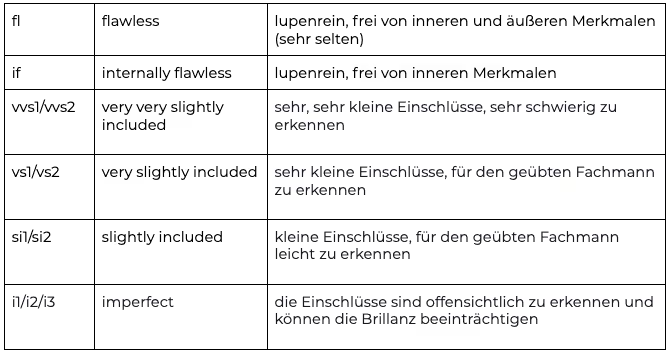A diamond is forever: The world's hardest currency

In the 1940s, London diamond producer and retailer De Beers became famous with the slogan “A Diamond is Forever.” This insight is still symbolic of the lasting value and radiance of rare gemstones today. In addition to being processed in precious pieces of jewelry, diamonds are becoming increasingly popular as a crisis-proof tangible investment. Find out why diamonds represent an attractive asset class and which quality features investors should pay attention to.
Diamonds: A natural wonder
Diamonds are a naturally occurring mineral, usually in the form of octahedron shaped crystals and were formed millions of years ago, hundreds of kilometers below the earth's crust. The coveted gemstones are the hardest natural material on earth and were therefore called “adamas” (the invincible) even in ancient Greece. Diamond owes its unique structure to the enormous pressure and glowing heat under which carbon in the depths of the earth was compressed and thus modified. The precious stones reach the earth's surface as a result of volcanic activity. But the chance of finding a diamond is very low. On the one hand, because the ratio of gemstones to parent rock is only one to a million. On the other hand, because rough diamonds look completely inconspicuous before they are cut and polished in a lengthy process.
Natural diamonds are correspondingly valuable due to their limited supply and complex extraction. As a rule, several tons of soil must be searched before a diamond is found. Because of this rarity and “intrinsic value”, they are highly sought after: In industry, gemstones are used to cut, grind and polish hard materials because of their enormous hardness. Diamonds are also suitable as timeless pieces of jewelry or crisis-proof investment — they represent a large asset in an extremely small space.
Identify quality based on 4C's
The value of a diamond is measured according to the quality criteria “Carat”, “Cut”, “Clarity” and “Color” — the so-called “4Cs”.
- Carat (weight)
Carat is the unit used to indicate the weight of diamonds. Since 1913, carats have been measured based on the metric system, meaning that one carat corresponds to 0.2 g. However, there is no linear relationship between the weight of a diamond and its price, as the value is measured according to its cut, color and purity.
- Cut (Cut)
When cutting, it is important to differentiate between the shape and the quality of the cut. The shape of the diamond (e.g. oval, heart-shaped, or round) is easy to see with the naked eye. On the other hand, expert knowledge and special equipment are required to determine whether a diamond is expertly cut and well proportioned. Because the overall appearance and “sparkle” of the gemstone depend on the right cut.
- Clarity (Purity)
Purity is the extent to which a stone is free from natural imperfections. The more inclusions or stains a diamond has, the lower its value. The predicate Flawless A diamond only gets (flawless) when external and internal features such as inclusions at tenx magnification can no longer be identified even by experts. Flawless diamonds are extremely rare.
that Gemological Institute of America (GIA) has introduced the following clarity scale for cut diamonds, which is used internationally:

- Color (Farbe)
Experts indicate the color of diamonds with letters from D to Z. D stands for the highest color level and Z for the lowest. When color is present in diamond, the ability to reflect light (i.e. to “sparkle”) is limited. This is why the most valuable diamonds are colorless (D).
But diamonds with a distinct pure color are also extremely rare and sought after. These so-called “fancies” have shades outside the spectrum D to Z and come in almost all shades of color.
Legendary diamonds
Particularly expensive and rare diamonds are often owned by royalty as “crown jewels”, are exhibited in museums and sometimes auctioned off by well-known auction houses.
Two of the most expensive diamonds ever auctioned were:
- The unique”Blaue Wittelsbacher”, which changed hands in London in 2008 for 24.3 million dollars.
- The “Princie Diamond” is the most expensive diamond ever sold at an auction. An unknown bidder paid almost 40 million dollars for the diamond of almost 35 carats.
Legendary diamonds that are privately owned or museums include:
- “Cullinan” — the largest, unworked gemstone ever found. The 530.2 carat diamond is currently part of the British Crown Jewels and is worth an estimated 337 million euros.
- The famous “Sancy Diamond” weighs 55.23 carats and is invaluable due to its history. Today, this gemstone is part of the French crown jewels and is in the collection at the Louvre in Paris.
- This 105.6 carat heavy “Koh-i-Noor” is impossible to value. The diamond shines in the finest white and has changed hands many times since its discovery in 1294. It is now the property of the British Crown.
A top-class investment
Historically, diamonds have always been a stable asset class due to their natural scarcity and high demand at the same time. The low volatility and high concentration of value in a small space make them an attractive investment. However, interested parties who do not have specific expert knowledge should exercise caution so as not to make a bad purchase. For example, diamonds must necessarily have proof of certification. This certificate should have been issued either by the German Diamond Institute or by globally recognized institutions, such as the Hoge Raad voor Diamant (HRD), the International Gemological Institute (IGI) or the Gemological Institute of America (GIA). Buyers should also check the origin of the sparkling gemstones and pay attention to legitimate sources and cutters.



